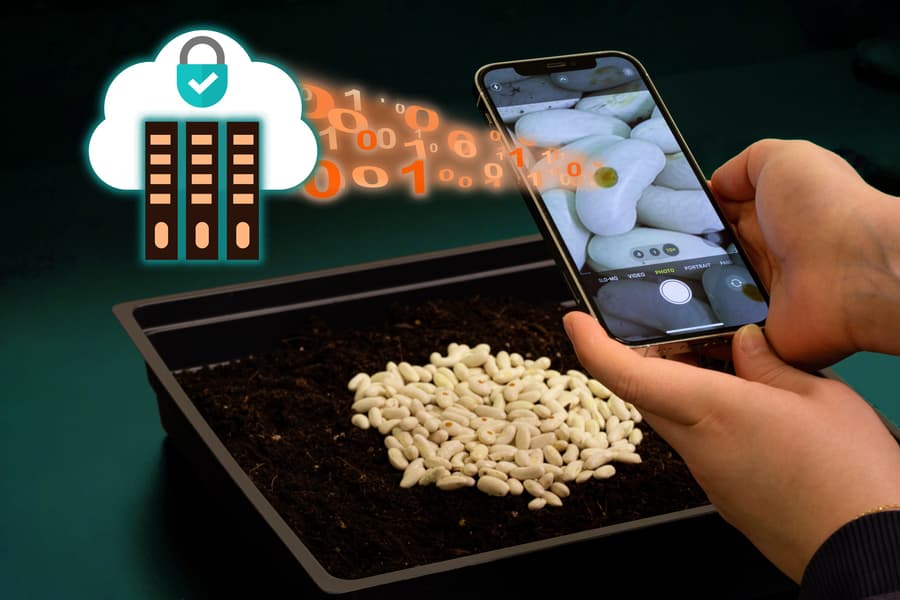Just like pharmaceuticals, banknotes and alcoholic beverages, the crop seeds sold to farmers are frequently counterfeits. MIT scientists have devised a method of spotting the fakes, by tagging genuine seeds with silk dots.
The World Bank has estimated that up to 50% of the seeds sold in some African countries aren’t really from the reputable agricultural companies which they’re claimed to be. These bogus seeds don’t germinate nearly as well as their better-bred legitimate counterparts, resulting in much lower yields.
Seeking a method of verifying the provenance of allegedly genuine seeds, researchers at MIT looked to biodegradable food-safe silk microparticles. The scientists engineered four different types of these particles, each of which reflects light in a distinct way when placed in a liquid solution that subsequently dries and crystallizes.
By mixing the different types of particles together in random combinations, concentrations and ratios, then applying small dots of the mixed solution to seeds, it’s possible to create product-specific tags with a unique spectral signature which is virtually impossible to duplicate. That signature can be read by a device such as a Raman spectrometer … which, admittedly, few farmers are going to have on hand.
With that limitation in mind, the researchers mixed four differently-colored salts in with the four types of silk microparticles. Doing so not only hugely increased the number of combinations possible, but it also resulted in seed-applied dots with distinctive colors that can be imaged by a smartphone camera with a macro lens.
The idea is that agricultural companies will start by applying dots with one unique spectral signature to all of the seeds in a given batch. When a farmer buys a bag of those seeds, they can read one of the seeds’ dots with their smartphone, then go online to compare its signature code to the one which the company recorded for that batch. If the two match up, then the farmer will know that the seeds did indeed come from that company.

MIT
The dots used in the study are just one-tenth of an inch (about 2.5 mm) in diameter. That said, if it’s more practical for commercial-scale usage, a liquid solution containing the microparticles could simply be applied to the seeds as an overall coating.
A paper on the research – which was led by Prof. Anantha Chandrakasan, Prof. Benedetto Marelli, postdoctoral researcher Hui Sun and graduate student Saurav Maji – was recently published in the journal Science Advances.
Source: MIT
Source of Article